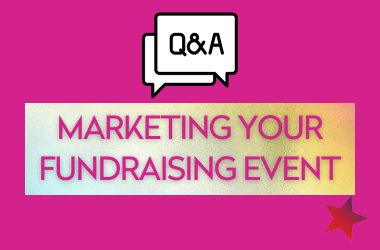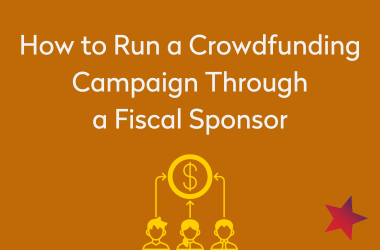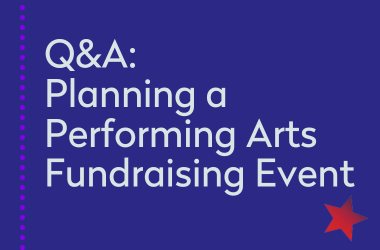Cultivating Individual Donors in the Performing Arts
Development & Fundraising through Individual Donations
Everyone needs money, and if you are an artist, nonprofit, or dance organization, a good chunk of your income is probably raised through fundraising. In the nonprofit sector, fundraising is often called “development”.
There are two basic types of development fundraising: individual giving and institutional giving.
Large organizations will often have different development teams that work on these two types of fundraising, but for small organizations and single artists, all the work probably falls on you, the artistic director, or a group of volunteers.
Learn more about getting funding through institutional funding here.
Individual Giving for Artists
Individual giving is the most common and direct type of arts fundraising. Individuals are asked to donate to an organization or a project, and in return they may get special acknowledgments or perks such as a tax deduction, swag, invitations, or naming rights. Common forms of individual giving campaigns include appeal letters (either via snail mail or email), benefit events, crowdfunding, and membership clubs.
Individual giving is very personal. At first, donations often come from one’s personal or professional contacts. To grow your donor base, it is important to connect your fundraising goals with donors’ personal interests and appeal to them to support what you are doing. Similar to a sales funnel, individual fundraising starts from audiences encountering your work at the largest point of entry, such as your website or social media channel, and moving to increasingly smaller and more personal points of contact, such as your email list and ticketed performances. Eventually a small percentage of these individuals will convert into donors; some may even become board members and repeat donors. The key to converting audience members into donors is to leverage each point of contact with them, and encourage them to become more connected and committed to supporting your work.
Fundraising through individual funding is hard work.
It requires a great deal of research, attention to detail, and persistence to pay off. Don’t try to do everything at once. If you have a short term fundraising goal, work on cultivating individual giving first. Institutional giving takes longer, but the funds can be larger. This is appropriate for your long-term plans and goals. Once you’ve decided what you want to do and the timeline, devote the necessary resources into pursuing these fundraising goals. Once your fundraising revenue gets flowing, there is no limit to what you can do!
Related Resources
Q&A: Marketing Your Fundraising Event
Q&A: Marketing your Performing Arts Fundraising EventUnveiling the Power of Event Fundraising: Elevate Your Fundraising Efforts! Hosting an event stands out as one of the most collaborative ways to raise funds. From planning to execution, various steps and factors...
Running a Crowdfunding Campaign Through a Fiscal Sponsor
Running a Crowdfunding Campaign Through a Fiscal SponsorRunning a crowdfunding campaign through a fiscal sponsor can be a great way to raise funds for your project. Being able to provide tax deductibility to your campaign contributors can be the factor that pushes...
Fundraising Q&A: Planning a Fundraising Event
Q&A: Planning a Performing Arts Fundraising EventEvent Fundraising in the Performing Arts can be a Great Way to Raise Funds There are a number of ways to fundraise money for a performing arts organization or cause. One of the most collaborative ways to fundraise...



